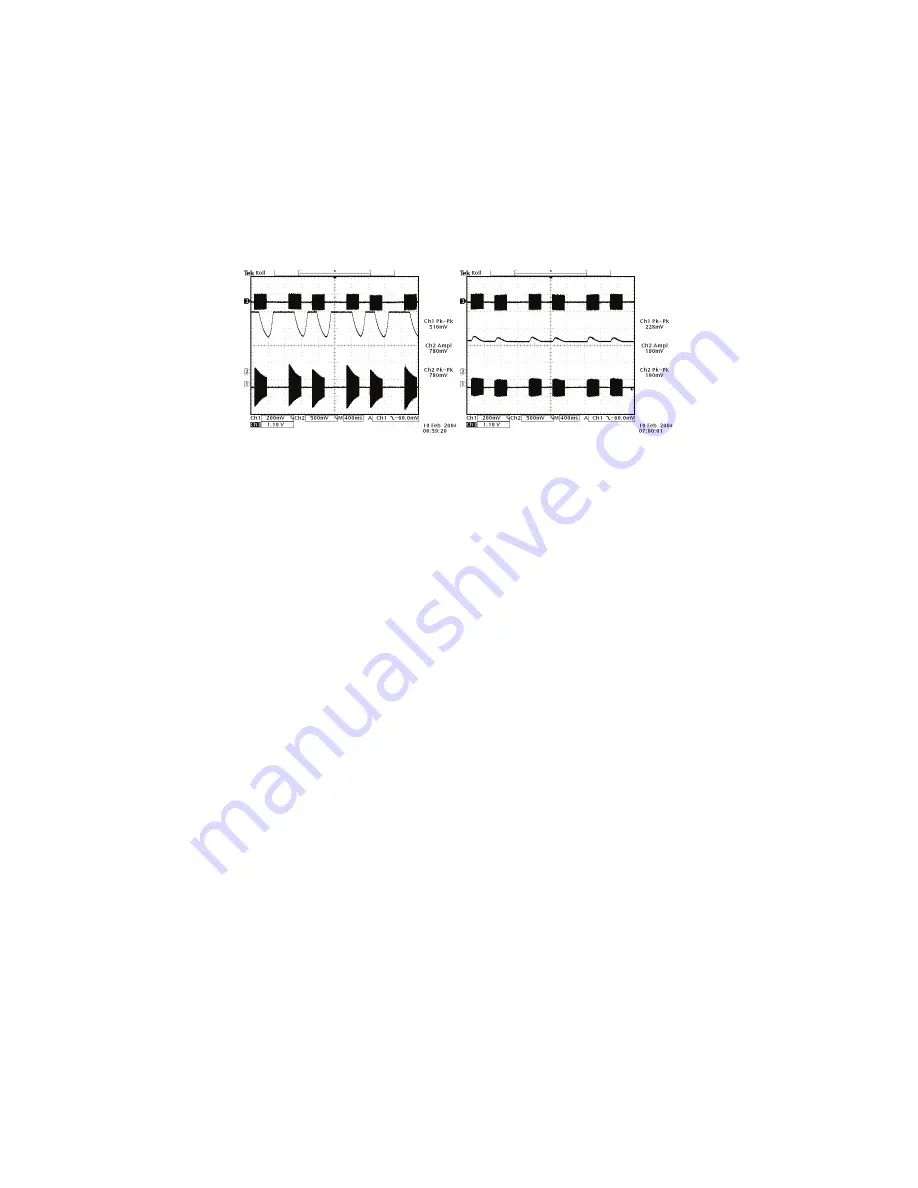
DSPXmini-FM operational manual V1.2
21
Like most competent audio processors the AGC stages in the DSPXmini-FM are gated. This slows down the
release time of the multi-band AGC when the program material drops below a certain level. This prevents noise
suck up and gain hunting from occurring during quiet periods or lulls in the audio. The DSPXmini-FM allows
adjusting the gate level over a range of -20dB to -0dB. This is the level at which the program material must
fall below for the gate to become active. The gate level control has two more options, OFF and ON. OFF is self
explanatory and prevents the gate from having any effect. ON is often referred to in this manual as ‘forced gat-
ing’ as it has the effect of switching the gate on at all times with any level of program material. This option is
used to bypass the AGC.
Under gated conditions, the gain reduction will slowly move to average gain the AGC had in the recent past.
This preserves the frequency balance of program material when multi-band AGC is gated.
Multi-band limiters
The multi-band limiter drive can be adjusted over a +/- 12dB range. Increasing the drive will increase the level of
limiting and with it on air loudness. Above a certain level of drive no more loudness will be obtained and all that
will happen is you will generate higher levels of IM distortion and the sound will take on a busy packed texture.
You may also observe higher levels of high frequency noise when the band and drives are increased. We
don't usually find much use for drives above +6dB but more may be required if other settings are adjusted to
compensate. In any case, observe the peak limiter meters for a good indication of how much drive to use. We
don't recommend more than 9dB of gain reduction especially on bands 2, and . Gain reductions of 2-6dB are
a good compromise between loudness and quality.
The multi-band limiters in the DSPXmini-FM are of the dual time constant variety. There is an attack and decay
to handle the peaks and an attack and decay to handle the average level of limiting. Understanding how the two
time constants interact is imperative if you want to make major changes to how each bands limiter reacts. We
have included some scope screen captures to illustrate things a little clearer. The peak and average function can
clearly be seen in the images.
Traditionally audio limiters have two time constants, an attack, the time is takes the limiter to respond to a signal
above the threshold and a decay or release which is the time is takes to respond to a drop in level. In a tradi-
tional audio limiter the attack time is usually set to somewhere in the region of a few milliseconds and the decay
time considerably longer at somewhere in the hundreds of milliseconds. This is not the most optimum solution
because transients that last only a few milliseconds will reduce the level of the waveform for hundreds of mil-
liseconds, reducing loudness and creating audible pumping effects.
The solution is multiple time constants where one set of time constants can be set to handle the fast peaks and
another to handle the average level of limiting. Fast transients will release in a faster less noticeable way and
won't punch holes in the sound in a way that single time constant limiters can. The secondary slower time con-
stant circuit will not have much effect on the audio waveform when hit with a transient because the higher attack
time, generally in the hundreds of milliseconds will not allow a build up of energy. In the case of a sustained
envelope of audio above the threshold the multiple time constant will attack as normal with the peak time con-
stant but the sustained energy will also charge the secondary slower circuit. When the audio energy falls away
and the circuit goes into release the peak decay will dominate until it reaches a point where it hands over to the
slower secondary time constant for a slower rate of decay. The illustrations show this to good effect, where tran-
sients have a fast release but multiple or sustained transients build up energy in the secondary circuit which acts
as a platform for the peak to release to. The secondary circuit's platform can be thought of as the average level
of limiting. Having this fast peak responding circuit ride on top of the average circuit creates many advantages,
limiter transparency, less chance of pumping and greater loudness. By setting the time constants appropriately
we can have the multiple time constant based detectors work as peak handling, average handling or the opti-
AGC attacking and decaying with gating disa-
bled
AGC attacking and decaying but with gating
enabled
The effects of gating
















































